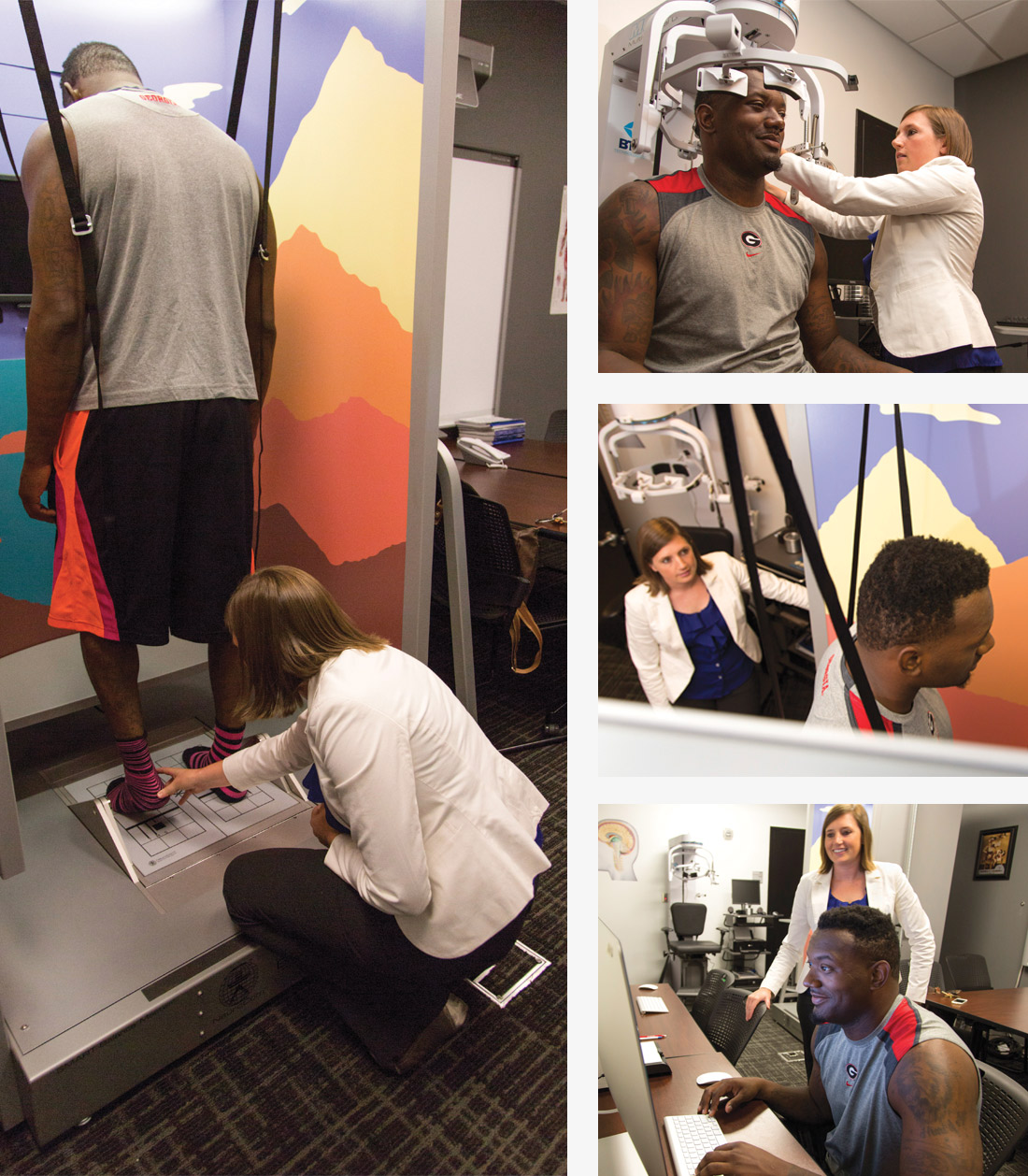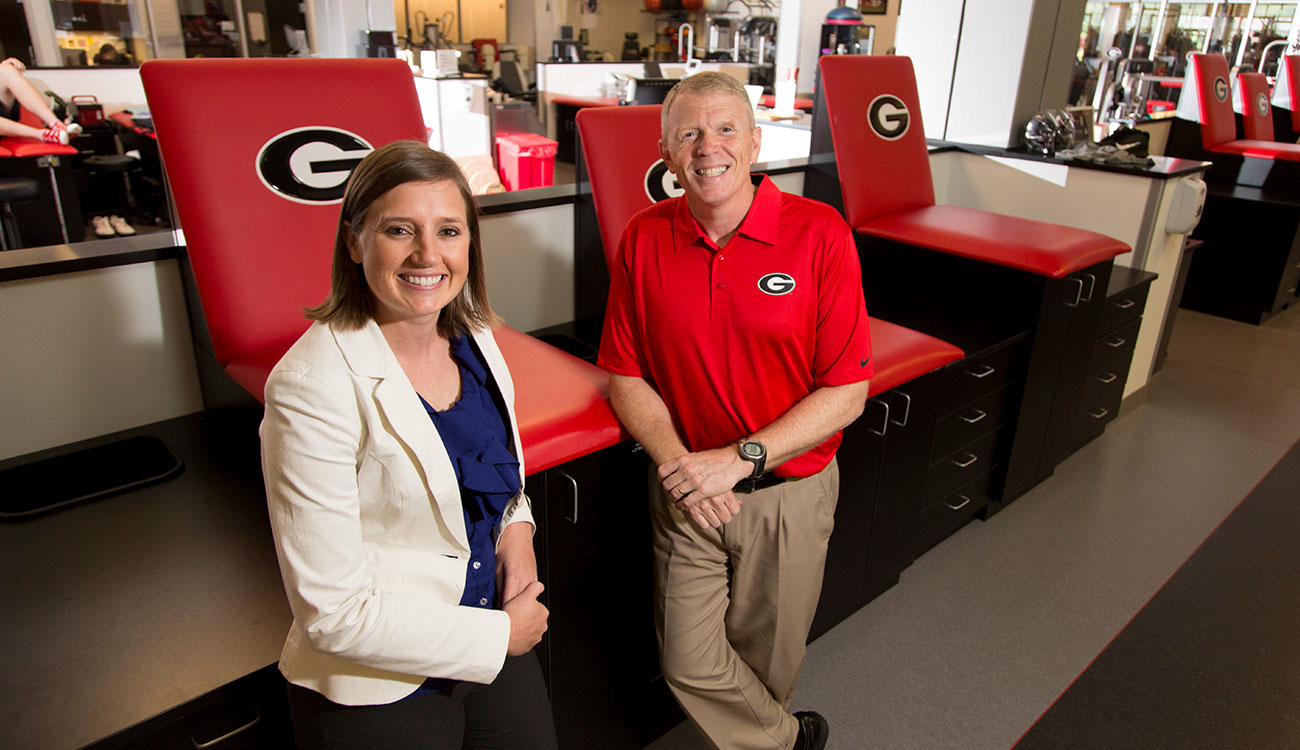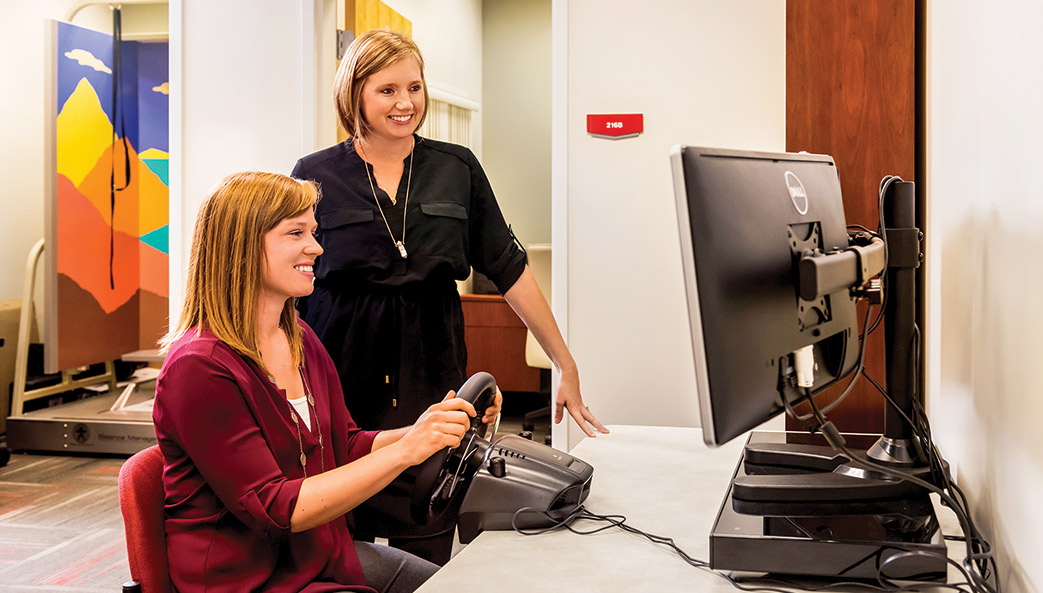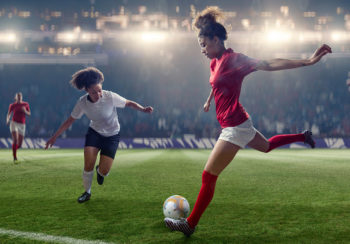Amid growing concerns about the effects of concussions on player health, the National Football League announced in September that it will pledge $100 million to support its new Play Smart, Play Safe initiative, which it hopes will hasten progress in the prevention, diagnosis and treatment of head injuries.
In an open letter, Commissioner Roger Goodell said the initiative will provide $60 million to improve helmet design, while $40 million will go toward medical research into head injuries.
“The NFL has been a leader on health and safety in many ways, and we’ve made some real strides in recent years,” he said. “But when it comes to addressing head injuries in our game, I’m not satisfied, and neither are the owners of the NFL’s 32 clubs. We can and will do better.”
Football leagues and other contact sports have faced intense scrutiny over their handling of head injuries, especially as a growing body of evidence suggests that repeated blows to the head increase the risk of neurological conditions like chronic traumatic encephalopathy, which can lead to memory loss, impulsive behavior, impaired judgment and progressive dementia.
Now, scientists in UGA’s Concussion Research Laboratory are working to find new ways to prevent concussions while also evaluating the impacts of head injury both on and off the field.
Their work may lead to new rule changes, coaching strategies and medical interventions that could protect current and future generations from the debilitating effects of repeated head trauma.
Head to head
In one study, published recently in the journal Pediatrics, researchers analyzed nearly 7,000 head impacts during 13 games in a high school football team’s season and post-season. Julianne Schmidt, assistant professor of kinesiology in UGA’s College of Education and author of the paper, said the analysis of game videos found players sustained more serious head impacts when hitting other players than players who hit their heads on another object, such as the ground.
The researchers also outfitted 32 players’ helmets with an impact telemetry system to capture the magnitude of each hit they sustained during a regular game.
Schmidt said the distance players ran affected the severity of their head impact. Players who ran more than 10 yards before impact had much more severe head injuries than those who traveled just a few feet, which is similar to earlier findings in studies of college football players.
The severity of the impact was also affected by the stance athletes used before the start of a play. Players who took a traditional “three-point stance” and ran a long distance before impact were more likely to sustain more severe head impacts.
She suggested coaches and administrators emphasize good tackling techniques by teaching proper head and body positioning. Rule changes related to positions that combine starting in the three-point stance and running long distances should also be considered, Schmidt said.
“High school football players who start in a three-point stance do not typically run a long distance before collision. But some position types, like tight ends and defensive ends, might be more likely to combine the two,” she said.
It’s common for football players to sustain several head impacts per game, Schmidt said, although a relationship between head impact and concussion risk is not well understood. Still, preventing head impacts and reducing head impact severity may help make the game safer for players of all ages.
Stifling stigma
One of the major problems with sport-related concussions is that coaches and doctors often have to rely on players to tell them if they have sustained a head injury that might require them to sit out for evaluation; they simply can’t watch everyone during complicated plays.
But players are often reticent to admit that they’re injured because they don’t recognize the symptoms of a concussion, or they believe that the injury isn’t serious. Athletes may also worry about missing valuable playing time due to an injury.
Schmidt and Welch Suggs, an associate professor in the Grady College of Journalism and Mass Communication, recently received a grant from the NCAA and the U.S. Department of Defense to create intervention methods that will help athletes seek assistance when they need it.
“The goal is to change the culture in sport to one of reporting rather than one of concealing,” said Schmidt.
Suggs, who studies how media images affect individual attitudes about health and sports issues, will help examine how in-person seminars and multimedia presentations affect athletes’ attitudes toward reporting concussions.
“Athletes are unwilling to report concussions because they’re worried about compromising their status on the team,” he said. “We’re trying to work with the athletes and the people surrounding them to make concussion reporting less of a threat.”
The researchers will conduct a survey to determine athletes’ knowledge and attitudes toward concussions, and the results will be used to create an intervention strategy.
Parents and coaches will be involved in the process as well, which will help reinforce among the athletes the importance of reporting a concussion. While there are no military participants in the research, the Department of Defense plans to use the study to address similar concussion-reporting issues among soldiers.
Schmidt said at the end of the study the team plans to present guidelines to be distributed throughout the NCAA to encourage new concussion reporting standards.
“A concussion can represent a threat to your status, a threat to your identity as part of an elite athletic group,” she said. “We’re trying to show athletes that it’s OK to seek treatment for injuries.”

Beyond the gridiron
While a concussion can keep an athlete out of a game, researchers are also asking if the same type of injury should keep someone from getting behind the wheel.
Schmidt recently began the first-ever study of the effect concussions have on driving a vehicle. She partnered with Hannes Devos, an assistant professor at Augusta University and assistant director of the school’s Driving Simulation Lab, to create a driving test and a set of cognitive tests to evaluate patients at different points in their recovery.
“We have good recommendations for when to go back to sport but very little on when to go back to driving,” said Schmidt, who also works with Ron Courson, the UGA Athletic Association’s senior associate athletic director for sports medicine, to evaluate head impacts among UGA football players. “We see a lot of the same neuropsychological effects that lead us to believe people are impaired in ways that would affect their driving following a concussion, but nobody has ever studied it.”
She added that fewer than half of patients with a concussion plan to change their driving habits after their injury. Yet often, concussion symptoms affect skills required to drive, such as response time and cognition.
Schmidt and Devos began data collection last fall, with recreational athletes and members of the local community serving as study participants.
Using a steering wheel and pedals hooked up to three wide-screen computer monitors, participants used the driving simulator to navigate streets, pass cars on highways and react to common driving situations, like stopping at a red light or swerving to miss a child running into the street.
“So based on their driving ability and cognitive tests, we will be evaluating their skills related to driving,” said Devos. He noted that while it’s important to know when someone who suffers from a concussion is ready to return to work, school or sports, “an equally important question is, ‘When can people with a concussion go back to driving?’”
Along with the driving test, a neurological evaluation is important because not all cognitive impairments affect a person’s driving ability. For example, slurred speech won’t have the same effect on driving that delayed reaction time will. By pairing the tests, Schmidt said, the researchers get a fuller understanding of how the head injury translates to the task of driving.
The results of their trial could have far-reaching implications, and they may be particularly useful for the U.S. armed forces. Military personnel sustain concussions at high rates—either in combat or in training exercises—and it would be beneficial to have guidelines for when it’s safe to get behind the wheel again.
“This will be a study that people will refer to for a long time,” said Schmidt.
Future research
Schmidt and her colleagues also recently began a project to examine the process of recovering from a head injury. There is a wealth of information available to players, coaches, parents and doctors about how to recognize the signs of a concussion, but what’s less clear is what should be done once a diagnosis is made.
Most athletes, for example, are simply told that they should rest both their mind and their body, which is subject to wide interpretation.
To help solve this problem, researchers will attach a wristwatch-like accelerometer similar to a Fitbit to capture what athletes are doing after a concussion. They want to know how much they are resting or how well they are sleeping to see if those variables affect their recovery.
It could be possible that athletes who get a lot of rest will recover more quickly, but too much rest could potentially slow the recovery process, Schmidt said. There are a lot of variables at play when it comes to recovery, and researchers need solid data points to make new recommendations.
And that, ultimately, is what Schmidt’s research is all about. She and her colleagues are constantly mining for evidence that will show a clear path forward in the battle against concussions.
“Everything we do in our laboratory is applied, translational research,” Schmidt said. “We focus on the full spectrum of concussion, whether that’s prevention, diagnosis or treatment. And we hope that ultimately what we discover will lead to new guidelines or interventions to help keep people safe.”






